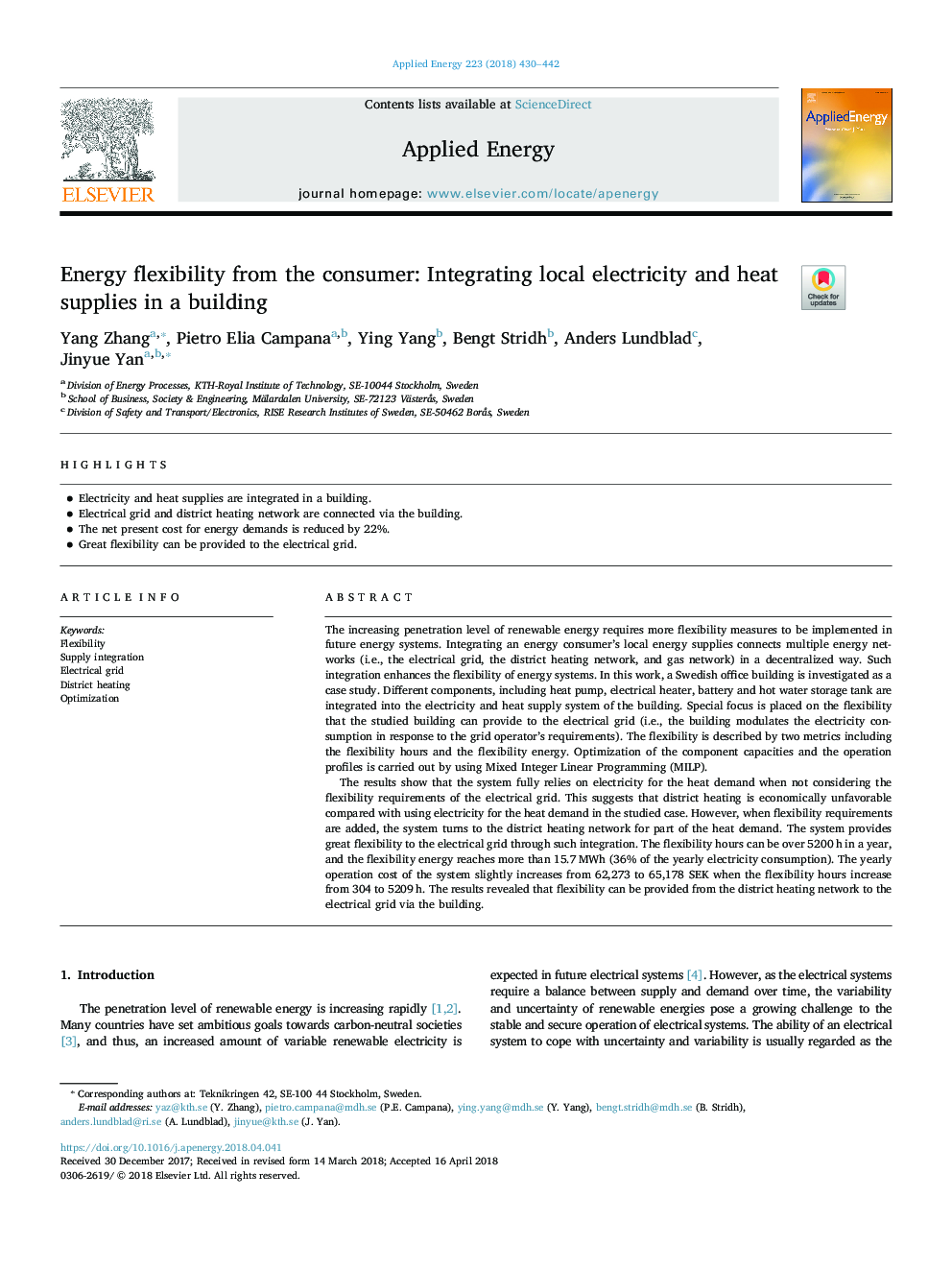| Article ID | Journal | Published Year | Pages | File Type |
|---|---|---|---|---|
| 6680079 | Applied Energy | 2018 | 13 Pages |
Abstract
The results show that the system fully relies on electricity for the heat demand when not considering the flexibility requirements of the electrical grid. This suggests that district heating is economically unfavorable compared with using electricity for the heat demand in the studied case. However, when flexibility requirements are added, the system turns to the district heating network for part of the heat demand. The system provides great flexibility to the electrical grid through such integration. The flexibility hours can be over 5200â¯h in a year, and the flexibility energy reaches more than 15.7â¯MWh (36% of the yearly electricity consumption). The yearly operation cost of the system slightly increases from 62,273 to 65,178 SEK when the flexibility hours increase from 304 to 5209â¯h. The results revealed that flexibility can be provided from the district heating network to the electrical grid via the building.
Related Topics
Physical Sciences and Engineering
Energy
Energy Engineering and Power Technology
Authors
Yang Zhang, Pietro Elia Campana, Ying Yang, Bengt Stridh, Anders Lundblad, Jinyue Yan,
